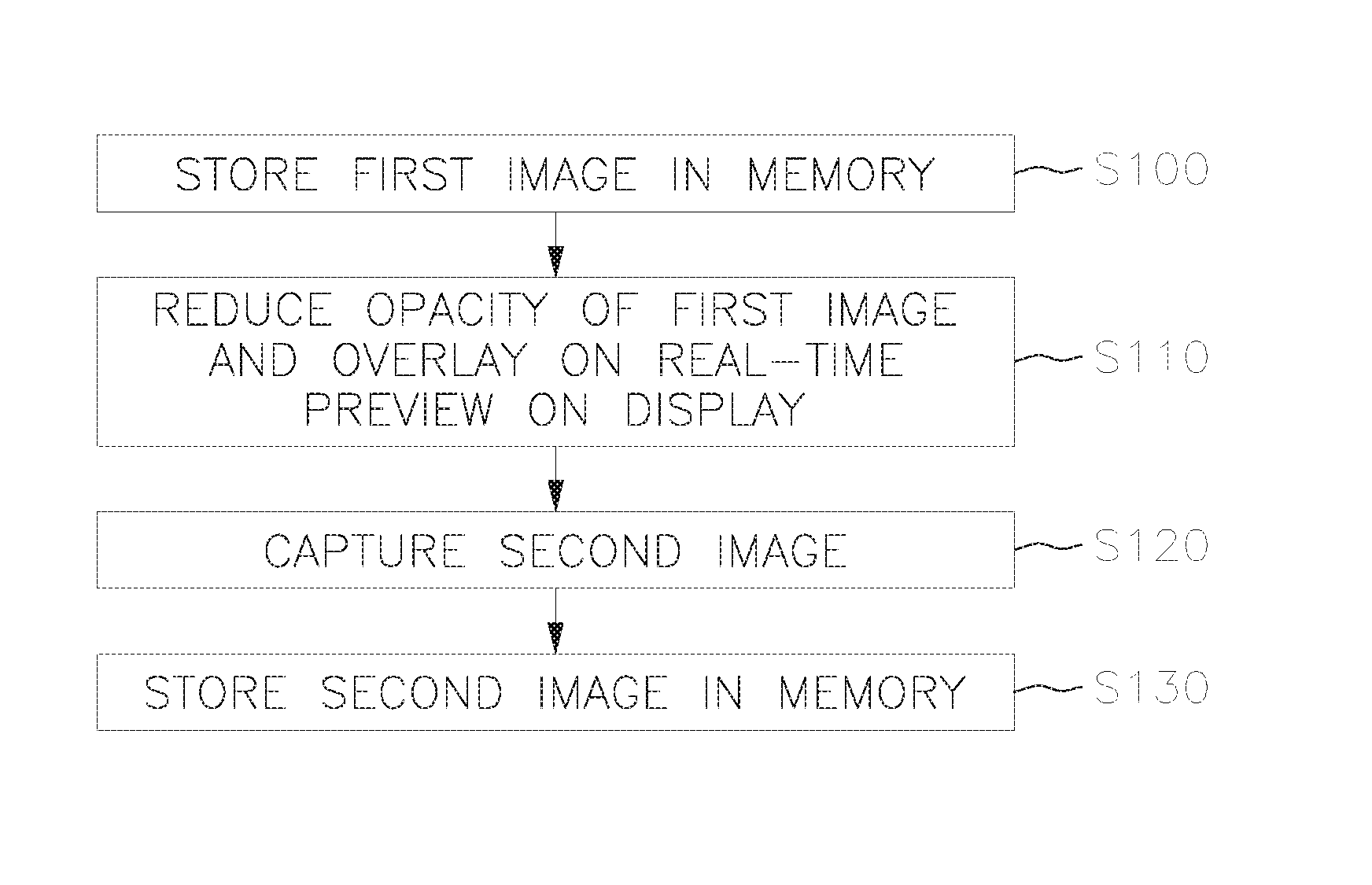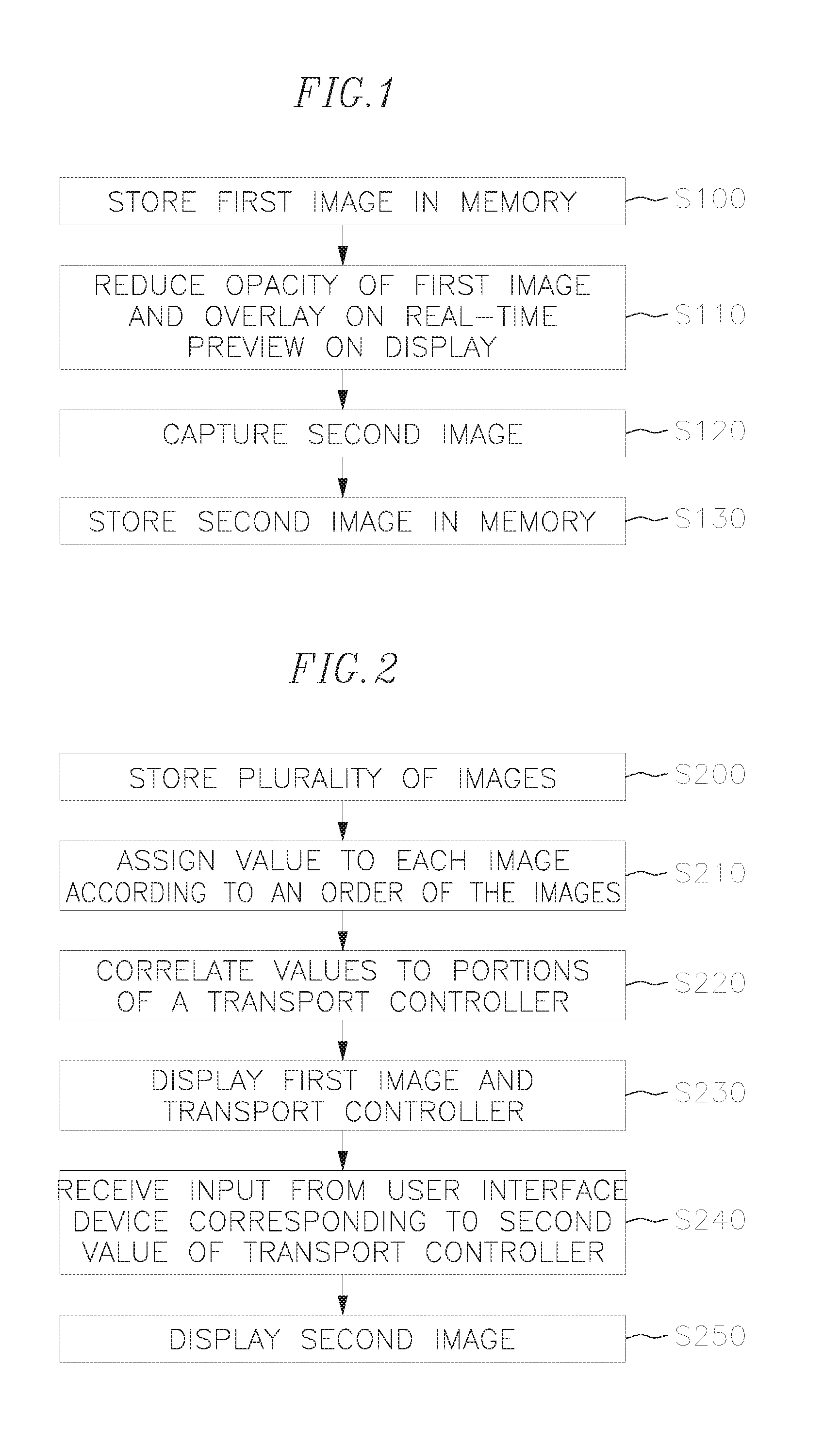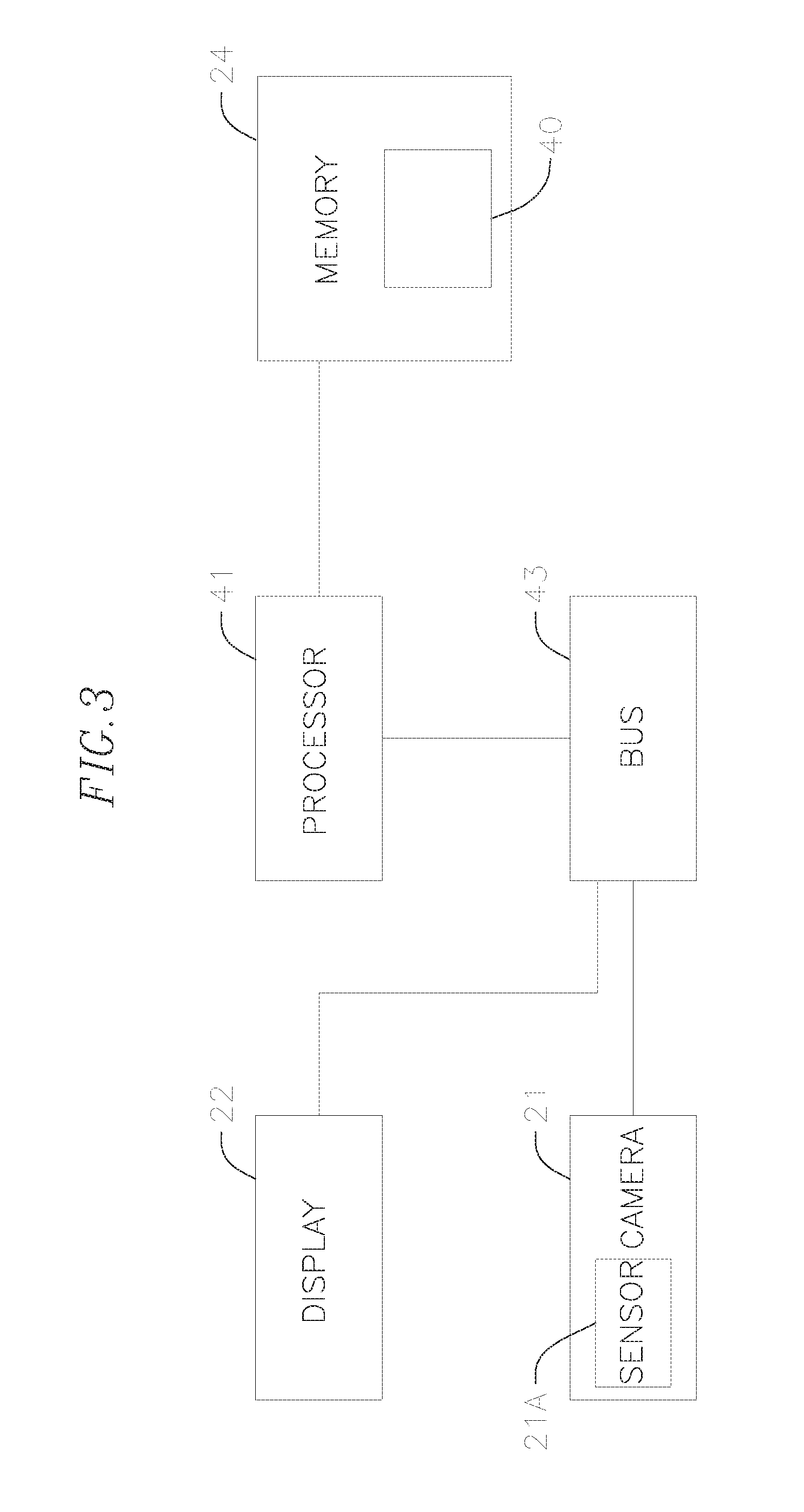Camera system and method for aligning images and presenting a series of aligned images
a camera system and image technology, applied in the field of image capture, can solve the problems of opacity, user's inability to compare a previously captured image with a currently framed image, and the user's inability to create a time-lapse of photographs taken, etc., to achieve the effect of reducing opacity
- Summary
- Abstract
- Description
- Claims
- Application Information
AI Technical Summary
Benefits of technology
Problems solved by technology
Method used
Image
Examples
Embodiment Construction
[0061]Embodiments of the present disclosure relate to a camera system and method for aligning images by referencing a previously obtained image to align a subsequent image. The drawings depict some example embodiments as applied to the camera system and method for aligning images for illustrative purposes only, and it will be apparent that modifications may be made without departing from the spirit and scope of the invention, and also that the present disclosure may be used in other applications in the same or similar fields. Although relative terms such as “first,”“second,” etc. have been used herein to describe relative relationships between elements, it is to be understood that these terms are not intended to be limiting, but are instead used to distinguish one element from another. Moreover, the figures contained in this application are not necessarily drawn to scale. Further, it will be understood that when an element or layer is referred to as being “on” another element or lay...
PUM
 Login to View More
Login to View More Abstract
Description
Claims
Application Information
 Login to View More
Login to View More - R&D
- Intellectual Property
- Life Sciences
- Materials
- Tech Scout
- Unparalleled Data Quality
- Higher Quality Content
- 60% Fewer Hallucinations
Browse by: Latest US Patents, China's latest patents, Technical Efficacy Thesaurus, Application Domain, Technology Topic, Popular Technical Reports.
© 2025 PatSnap. All rights reserved.Legal|Privacy policy|Modern Slavery Act Transparency Statement|Sitemap|About US| Contact US: help@patsnap.com



